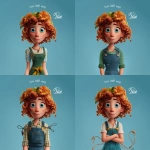Explore the Best AI Image Gallery

Beyond the Canvas: How Wearable Tech is Transforming Creative Expression
The realm of creativity has always been a fertile ground for innovation, constantly evolving with the advent of new tools and technologies. Today, wearable technology stands as a groundbreaking force, pushing the boundaries of artistic expression and reshaping the very fabric of how we create and experience art.
Wearable Tech: A New Toolkit for Creative Expression
Wearables have introduced an exciting array of possibilities for artists, designers, and creators across disciplines. From interactive installations to personalized augmented reality experiences, these devices empower individuals to become both creators and participants in the artistic process.
Examples of Wearable Tech in Action
- Interactive Installations: Imagine a gallery where viewers movements trigger dynamic light displays or sound sculptures, blurring the lines between observer and participant. Wearables can sense movement, biofeedback, and even emotions, translating them into real-time interactive art experiences.
- Personalized AR Art: Augmented reality overlays projected onto the wearers field of vision open up a world of personalized artistic interactions. Imagine viewing a painting and having additional layers of information or animations appear based on your movements or preferences. This can enhance understanding, provide context, and foster deeper engagement with artwork.
- Gesture-Based Creation: Wearable sensors can translate hand gestures and body movements into digital art forms. Artists can sketch in mid-air, sculpt with their limbs, or compose music through intricate bodily movements, leading to a more intuitive and expressive creative process.
Ethical Considerations in the Age of Wearable Art
As with any emerging technology, wearable tech in the creative industry raises important ethical considerations that require careful attention:
Data Privacy and Security
Wearables often collect vast amounts of personal data, including biometric information, location, and even emotional responses. Ensuring the secure storage and responsible use of this data is paramount to protecting user privacy and building trust.
Accessibility and Inclusivity
It is crucial that wearable art technologies are accessible to individuals with diverse abilities. Designers must consider a wide range of needs and ensure inclusivity in both hardware and software development.
Algorithmic Bias
AI algorithms used in wearable creative tools can inherit biases present in the data they are trained on. This can lead to unfair or discriminatory outcomes, requiring careful scrutiny and mitigation strategies.
The Future of Wearable Tech in Creativity
The convergence of wearable technology with creativity holds immense potential for the future. As hardware advances, software becomes more sophisticated, and our understanding of human-computer interaction evolves, we can expect to see even more groundbreaking applications emerge:
Immersive Collaborative Experiences
Imagine artists collaborating in virtual worlds, sharing ideas and creations through wearables that bridge physical and digital spaces. This can foster global creative communities and unlock new avenues for artistic expression.
Personalized Learning and Skill Development
Wearable tech can provide personalized feedback and guidance to aspiring artists, helping them develop their skills and explore new creative techniques. Interactive tutorials, gamified learning experiences, and real-time performance analysis can revolutionize art education.
The Evolution of Artistic Expression
Ultimately, wearable tech has the power to redefine what it means to be an artist. It empowers individuals to become creators in a more immersive and personalized way, blurring the lines between technology, imagination, and human expression. As we continue to explore the frontiers of this exciting field, one thing is certain: the future of creativity is deeply intertwined with the evolution of wearable technology.









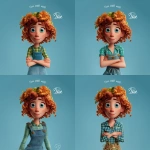

](https://images.ai-img.art/thumbnails/150/e6a179db327f0374ec327d0fdab48ac1f2dc47123eed103b0a41ed346280d07d.webp)


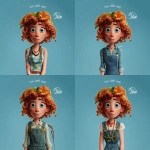

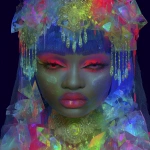



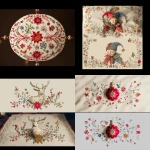
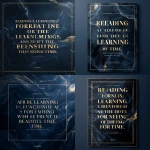

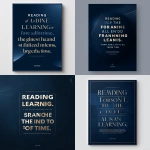

](https://images.ai-img.art/thumbnails/150/184b4b030e30be0a6d51b544226cb4cf2271977814d935d3aaa2b7529355b3b7.webp)



](https://images.ai-img.art/thumbnails/150/655229c40961cb7ff5abd4b4190e02c94ea1a961106e7547a562649c945268be.webp)
](https://images.ai-img.art/thumbnails/150/60973df1d727dbbf8e6922b7e4836814ab6012106eb9dcfe99aea7aec15f3710.webp)
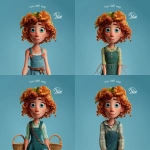


](https://images.ai-img.art/thumbnails/150/1202074d0d60b08b64d0f91f36468608aaac200a02b721cc8e6d8ec8a908432c.webp)


](https://images.ai-img.art/thumbnails/150/26c16e4f635deee86633de398088ca98d9bb748d6e7601436b07e882fab236cb.webp)






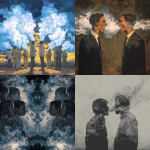

](https://images.ai-img.art/thumbnails/150/6c909fd6d38caac6572b592dd97831deb7d6562bba142798574677582676dfc1.webp)

